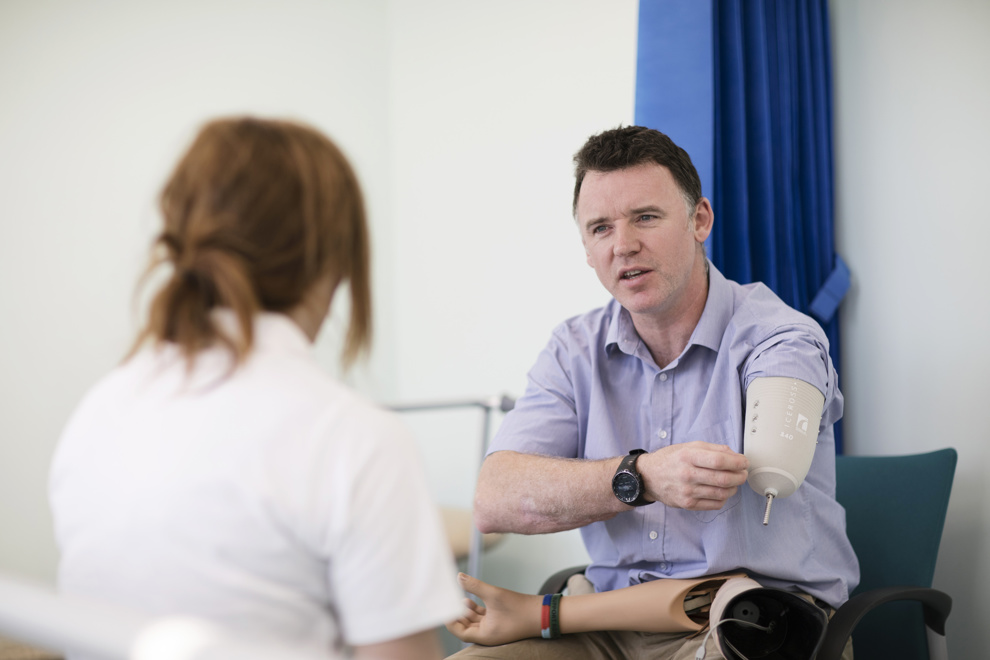Phantom limb pain affects 50–80% of amputees, causing sensations like aching, itching, or tingling in the missing limb. The pain varies from mild to severe and can be debilitating.
What Is Phantom Limb Pain?
Phantom limb pain sufferers experience acute sensations of pain that appear to come from the limb that has been amputated. This condition is more common in women than men and is particularly prevalent in upper limb amputations.
The term ‘phantom’ does not mean the pain is imaginary. Phantom limb pain is a well-documented phenomenon, confirmed through brain imaging scans that show nerve signals transmitting pain sensations to the brain. The intensity can range from mild to severe, with some individuals experiencing brief "electric shock" sensations and others enduring persistent, agonizing pain.
The phantom pain was unbearable, ranging from a seven to nine on the pain scale and leaving me incapacitated for hours. It was horrendous, and even strong painkillers couldn’t provide relief
John Sutherland, Blesma Member
What Causes Phantom Limb Pain?
Although the exact cause remains unclear, there are three primary theories explaining phantom limb pain:
Peripheral Theory: Suggests that nerve endings at the amputation site form clusters (neuromas) that generate abnormal electrical impulses interpreted as pain.
Spinal Theory: Proposes that the loss of sensory input from the amputated limb causes chemical changes in the central nervous system, leading to confusion in pain-processing areas of the brain.
Central Theory: States that the brain retains a memory of the lost limb and its associated nerve signals. The brain attempts to recreate this sensation but fails due to the lack of expected feedback, resulting in pain.
Living with Phantom Limb Pain: Veteran Story
Steve Fisher, a Welsh veteran, and Blesma Member, endured over 30 years of relentless pain following a devastating injury in the Falklands War. After struggling with worsening mobility, he opted for a below-knee amputation — but complications led to 16 years of excruciating phantom limb pain.
Steve shares: “Until recently, I hardly ever slept due to severe Phantom Limb Pain. It felt like severe shots of electricity or as if somebody was stabbing me in my stump with an ice pick!"
Despite multiple treatments, Steve struggled with pain, depression, and reliance on medication. A final surgery, burying the damaged nerve in bone, finally brought relief.
Blesma has been supporting Steve since 1996 and we are committed to providing ongoing support and community for our injured veterans.

How to Relieve Phantom Limb Pain
Managing phantom limb pain can be challenging, as treatments vary in effectiveness from person to person. A combination of medical, non-invasive, and psychological therapies is often required.
1. Medication and Pain Management
Doctors may prescribe medications to help relieve nerve-related pain, including:
- Anticonvulsants (Carbamazepine, Gabapentin) to reduce nerve pain.
- Antidepressants (Amitriptyline, Nortriptyline) to alter pain perception.
- Opioids (Codeine, Morphine) for severe cases, though long-term use carries risks.
2. Non-Invasive Therapies
Several non-invasive methods may provide relief from phantom limb pain:
- Heat and Cold Therapy: Heat packs, ice packs, and topical rubs can help reduce discomfort.
- Massage Therapy: Improves circulation and reduces muscle tension.
- Acupuncture: Stimulates the nervous system and may alleviate pain.
- Transcutaneous Electrical Nerve Stimulation (TENS): Small electrical impulses are delivered to the stump to interrupt pain signals and release endorphins, the body’s natural painkillers.
3. Mental Imagery and Mirror Therapy
Mental exercises and mirror therapy have shown promising results in reducing phantom pain. A 2008 study found that individuals who spent 40 minutes imagining movements of their phantom limb experienced pain relief.
Mirror Visual Feedback (MVF) is another effective technique where a mirror is used to reflect the remaining limb, creating the illusion of movement in the missing limb. This may provide the brain with the feedback it expects, reducing pain.

Is There a Cure for Phantom Pain?
Phantom limb pain is a complex condition that requires personalised treatment. Options such as medication, non-invasive therapies, and psychological interventions can help improve quality of life. If you or someone you know is affected, seeking medical advice is essential for finding an effective treatment plan.
Blesma is a charity dedicated to supporting limbless veterans, offering a range of services to help our Members. We have nine Support Officers, an in-house prosthetics expert, and work closely with the UK health service to connect our Members with additional support when needed.
1Source: Information Leaflets
We can help
We are dedicated to assisting serving and ex-Service men and women who have suffered life-changing limb loss or the use of a limb, an eye or sight. We support these men and women in their communities throughout the UK. Click the link below to find out the different kinds of support we offer.
Get Support